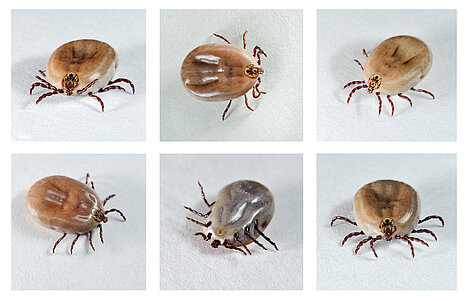Anaplasma

Anaplasmas are bacteria that can be transmitted to dogs through tick bites. They can cause an infectious disease called anaplasmosis, which can cause various symptoms. In this blog post, you will learn how to recognize, treat and prevent anaplasmosis in dogs.
What is anaplasmosis?
Anaplasmosis is an infectious disease of dogs caused by bacteria of the genus Anaplasma. There are two types of Anaplasma that are relevant for dogs: Anaplasma phagocytophilum and Anaplasma platys.
Anaplasma phagocytophilum attacks the white blood cells (granulocytes) of the dog and is most commonly transmitted in Europe by the tick species of the common wood tick. This disease was previously also known as "granulocytic ehrlichiosis".
Anaplasma platys affects the blood platelets (thrombocytes) of the dog and is mainly transmitted in southern Europe, Africa and Asia by various tick species. This disease is also known as "thrombocytic anaplasmosis" or "canine cyclic thrombocytopenia".
How do you recognize anaplasmosis in dogs?
The symptoms of anaplasmosis in dogs can vary depending on the type of pathogen, the dog's immune status and the presence of other infections. Many dogs show no or only mild symptoms and recover on their own. However, other dogs may become severely ill and require treatment.
Symptoms of anaplasmosis caused by Anaplasma phagocytophilum may include :
- Fever, especially high for 3 to 5 days
- loss of appetite
- Nausea and vomiting
- lameness
- diarrhea
- Swollen joints
- Enlarged lymph nodes
- Superficial bleeding
- Nosebleeds
- Cough
- Balance disorders
- Inflammation of the retina in the eye
The symptoms of anaplasmosis caused by Anaplasma platys can be
- Fever
- Anemia
- Tendency to bleed
- nosebleeds
- Bleeding gums
- Bruising on the skin
How is anaplasmosis diagnosed in dogs?
In order to diagnose anaplasmosis in dogs, a vet must examine a blood sample from the dog. He can use various methods, such as :
- Microscopic examination: This involves looking at the blood cells under a microscope to identify the bacteria. However, this is not always reliable, as the bacteria are only visible for a short period after the infection.
- Serological examination: The blood is tested for antibodies against the bacteria. This indicates whether the dog has had a current or previous infection. However, it can take several weeks for the antibodies to be detectable and they can persist for a long time even in cured dogs.
- Molecular testing: This tests the blood for the genetic material (DNA) of the bacteria. This is the most accurate method of detecting an active infection. However, it is also more expensive and time-consuming than the other methods.
How is anaplasmosis treated in dogs?
The treatment of anaplasmosis in dogs usually consists of antibiotic therapy. This usually involves the use of drugs from the tetracycline group, such as doxycycline. The duration of treatment can vary depending on the severity of the disease and the dog's response, but is usually between 2 and 4 weeks.
In addition to antibiotic therapy, it may also be necessary to support the dog with other medications or measures, such as :
- Painkillers and anti-inflammatories: These can help to alleviate the dog's symptoms, especially in the case of joint inflammation or fever.
- Blood transfusion: This may be necessary if the dog has severe anemia or a strong bleeding tendency.
- Fluid therapy: This can help to stabilize the dog's fluid and electrolyte balance, especially in cases of vomiting or diarrhoea.
- Symptomatic treatment: This can be adapted according to the dog's individual needs, for example in cases of eye inflammation or coughing.
How can anaplasmosis in dogs be prevented?
The best way to prevent anaplasmosis in dogs is to avoid tick bites. There are various ways to do this, such as :
- Tick repellents: These can be applied as a spot-on, collar, tablet or spray and have a repellent or killing effect against ticks. They should be renewed regularly and used according to the manufacturer's or vet's instructions.
- Tick control: This consists of checking the dog daily for ticks and, if necessary, removing them with suitable tick tweezers. Care should be taken to grasp the tick as close to the skin as possible and not to squeeze or twist it in order to prevent the transmission of bacteria.
- Vaccination: There is a vaccination against Anaplasma phagocytophilum for dogs that is available in some countries. It can be administered as part of a combination vaccine against several tick-borne diseases. The vaccination should be administered according to the veterinarian's recommendations.
Anaplasmosis is a tick-borne infectious disease of dogs caused by bacteria of the genus Anaplasma. It can cause various symptoms, ranging from mild to severe. Diagnosis is based on a blood test and treatment usually consists of antibiotic therapy. Prevention is based on protecting the dog from tick bites.
The authors assume that a veterinarian should be consulted if an animal is ill and that medication should only be taken after consultation with a doctor or pharmacist. Only an individual examination can lead to a diagnosis and treatment decision.
We help you find the nearest vet → This way